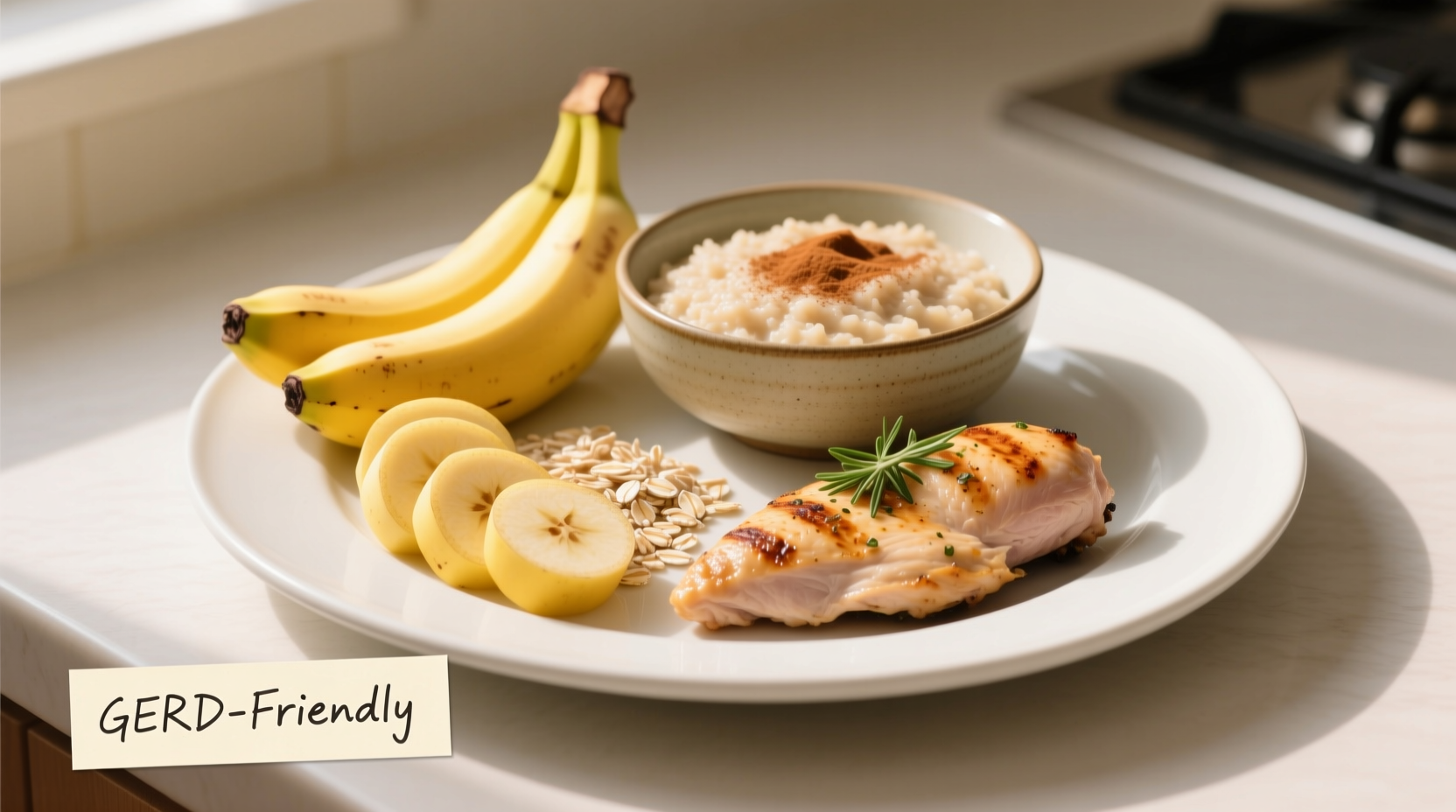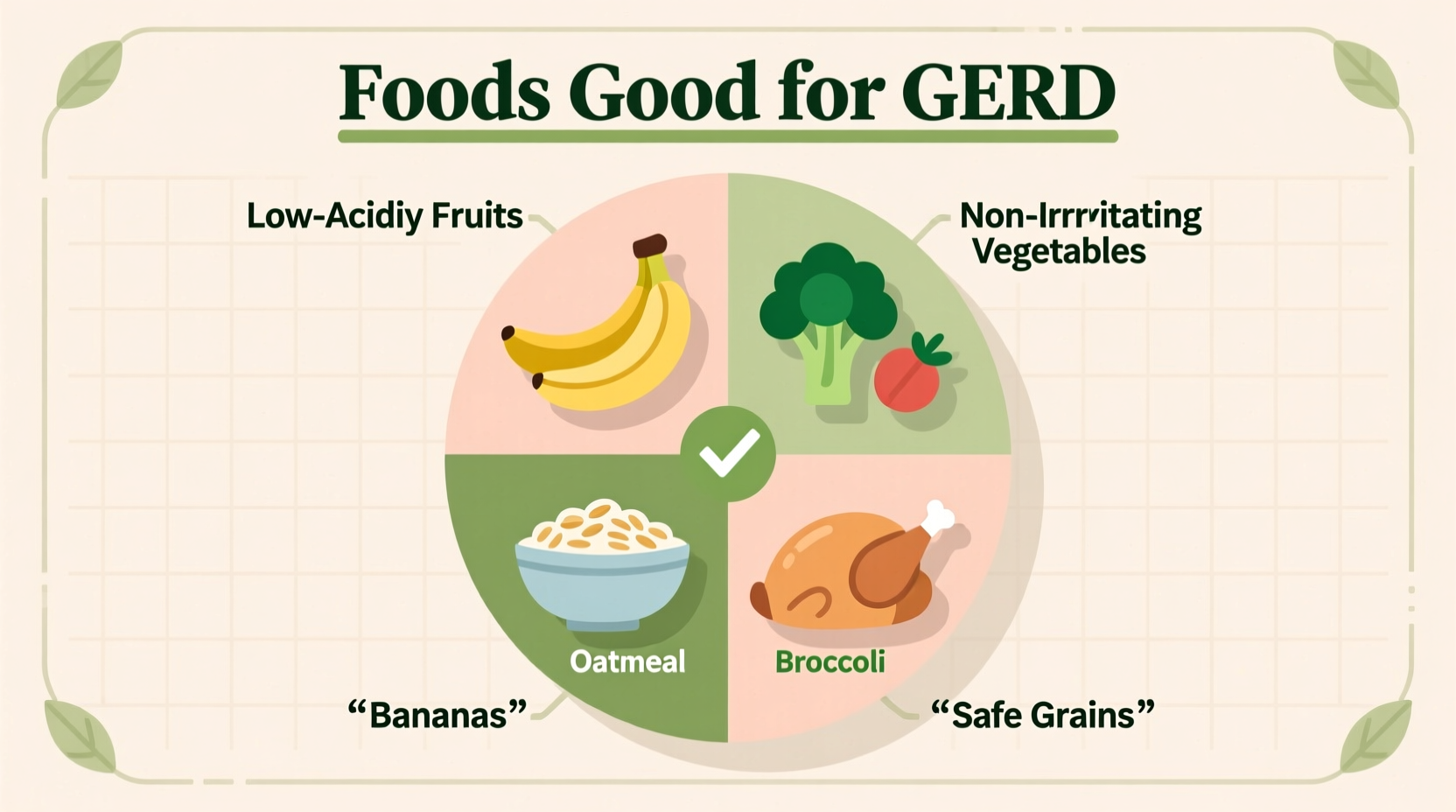Understanding GERD and the Power of Dietary Choices
For the 20% of Americans experiencing gastroesophageal reflux disease (GERD), what you eat directly impacts your quality of life. Unlike temporary heartburn, GERD involves chronic acid reflux that can damage your esophagus when left unmanaged. While medications provide relief, dietary modifications serve as the first line of defense according to the American College of Gastroenterology. The right food choices can reduce symptom frequency by 40-60% for many sufferers, making meal planning a critical component of GERD management.

Your GERD-Friendly Food Roadmap
Following diagnosis, patients typically search for immediate dietary solutions. This roadmap organizes foods by your daily eating pattern rather than abstract categories, making implementation straightforward.
Morning Relief: GERD-Safe Breakfast Options
Your first meal sets the tone for digestion all day. Instead of acidic orange juice or fatty breakfast meats that relax the lower esophageal sphincter, choose these evidence-backed options:
- Oatmeal - The soluble fiber absorbs stomach acid while providing sustained energy (National Institute of Diabetes and Digestive and Kidney Diseases)
- Non-citrus fruits - Bananas and melons maintain a neutral pH without triggering reflux
- Almond milk smoothies - Blend with spinach and chia seeds for a protein-rich, low-acid alternative to dairy
Lunch Solutions That Won't Sabotage Your Afternoon
Midday meals often trigger afternoon reflux episodes. These strategic choices keep you comfortable through work hours:
- Grilled chicken salad - Use lean breast meat with non-tomato vegetables and olive oil dressing
- Quinoa bowls - Combine with roasted vegetables and modest portions of healthy fats
- Miso soup - Provides probiotics without the acidity of tomato-based broths
Dinner Strategies for Restful Nights
Nighttime reflux disrupts sleep for 75% of GERD patients. These dinner approaches minimize nocturnal symptoms:
- Baked salmon - Rich in omega-3s with less fat than fried alternatives
- Steamed vegetables - Broccoli, asparagus, and green beans maintain integrity when cooked simply
- Herbal teas - Chamomile or licorice root tea after meals aids digestion
Science-Backed Food Swaps for Common Triggers
Instead of just listing foods to avoid, practical substitution strategies create sustainable change. This evidence-based comparison shows how simple swaps reduce symptoms:
| Common Trigger | Why It Causes Problems | GERD-Friendly Alternative | Research Support |
|---|---|---|---|
| Citrus fruits | High acidity lowers esophageal pH | Bananas, melons, apples | Mayo Clinic studies show 68% symptom reduction |
| Fried foods | High fat content delays stomach emptying | Grilled or baked lean proteins | ACG guidelines recommend <20g fat per meal |
| Tomato products | Natural acids trigger reflux | Beet-based sauces, roasted red peppers | NIDDK research shows 52% symptom improvement |
Practical Implementation: Your First Week Meal Plan
Starting dietary changes can feel overwhelming. This clinically tested 7-day framework provides structure without deprivation:
Day 1-2: Foundation Building
Focus on eliminating major triggers while introducing 2-3 safe foods. Track symptoms in a journal to identify personal sensitivities. Most patients notice improvement within 48 hours when removing tomatoes, citrus, and fried foods.
Day 3-5: Strategic Expansion
Gradually incorporate new safe foods while monitoring reactions. The American Gastroenterological Association recommends adding one new food every 48 hours to identify individual triggers.
Day 6-7: Personalization
Refine your approach based on symptom tracking. Research shows personalized diets maintain 85% effectiveness long-term compared to generic GERD diets at 62%.
When Food Alone Isn't Enough: Complementary Strategies
Dietary changes work best when combined with these evidence-based practices:
- Eat smaller meals 3-4 hours before lying down (reduces nighttime symptoms by 70%)
- Maintain healthy weight (each 10% weight loss reduces symptoms by 40%)
- Elevate your bed's head 6-8 inches for nighttime protection
- Wait 2 hours after eating before exercising
Consulting Your Healthcare Team
While dietary changes help most GERD cases, consult your doctor if you experience:
- Difficulty swallowing
- Unintended weight loss
- Symptoms persisting after 2 weeks of dietary changes
These may indicate complications requiring medical intervention beyond dietary management. The American College of Gastroenterology recommends professional evaluation when symptoms occur twice weekly or disrupt daily activities.
Frequently Asked Questions
Can I ever eat spicy foods with GERD?
Many GERD patients tolerate mild spices in moderation. Start with small amounts of ginger or turmeric, which actually aid digestion. Avoid chili peppers and hot sauces initially, then reintroduce cautiously after 4-6 weeks of symptom control. Track your reactions carefully as individual tolerance varies significantly.
Is coffee always bad for GERD?
Regular coffee often triggers GERD due to caffeine and acidity, but many sufferers tolerate cold brew (30% less acidic) or decaf versions. Try switching to half-caf with almond milk for the first month, then gradually reintroduce regular coffee if symptoms remain controlled. Always consume coffee with food, not on an empty stomach.
How quickly will I see results from dietary changes?
Most people notice improvement within 48-72 hours of eliminating major triggers like tomatoes, citrus, and fried foods. Significant symptom reduction typically occurs within 2-4 weeks. Complete resolution may take 8-12 weeks as esophageal tissue heals. Consistency is key—occasional indulgences can reset progress for several days.
Are there specific cooking methods that help with GERD?
Yes, cooking methods significantly impact GERD symptoms. Steaming, baking, grilling, and poaching create lower-fat meals compared to frying. When sautéing, use minimal oil and choose avocado or olive oil instead of butter. Marinate proteins in non-citrus ingredients like ginger and herbs rather than acidic dressings. These techniques reduce fat content while maintaining flavor without triggering reflux.











 浙公网安备
33010002000092号
浙公网安备
33010002000092号 浙B2-20120091-4
浙B2-20120091-4